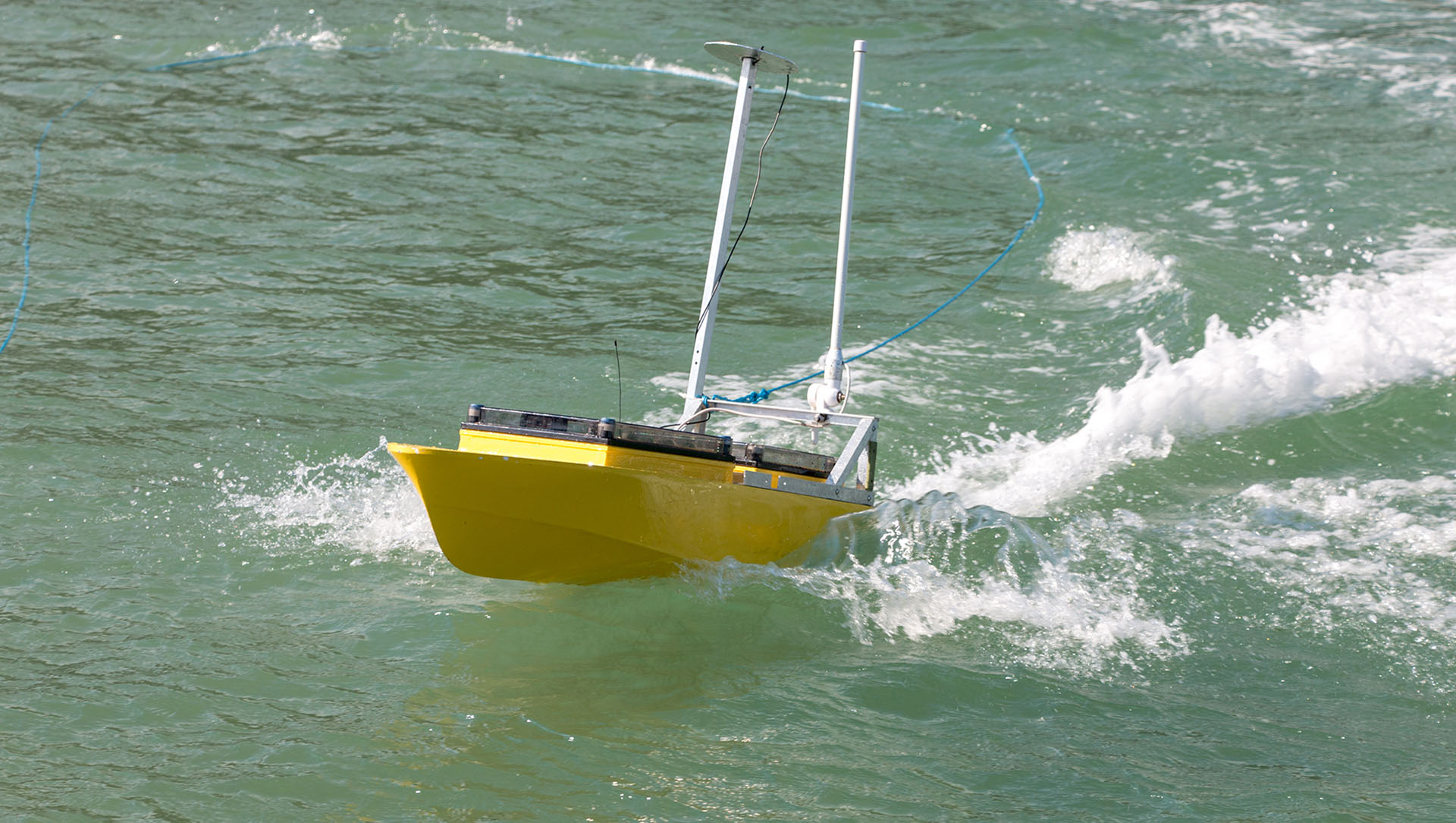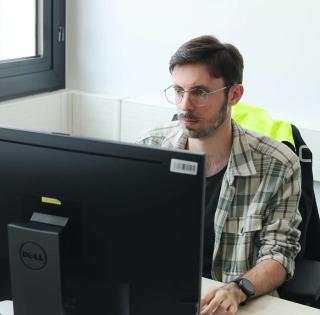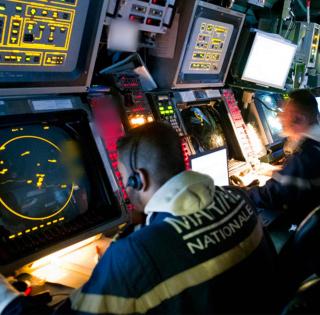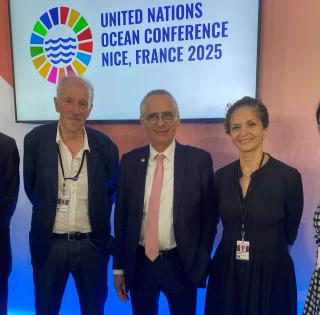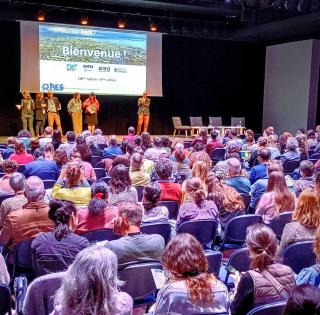
The ROBEX team develops methodological tools for designing intelligent marine robots which are capable of performing exploratory or operational missions completely autonomously, by knowing where they are headed and where they are located and by adapting their mission.
Among the many theses defended in recent years, the ones by Joris Tillet and Auguste Bourgois, defended in 2021, are contributing to the development of new autonomous robotic systems.
Thesis by Joris Tillet (awarded a DGA and Brittany Region grant): "safe localization and control of a towed sensor"
New algorithms which allow an autonomous marine robot to tow a magnetometer
Joris is an engineering graduate from ENSTA Bretagne, who majored in mobile robotics. He was a member of the team that won the 2018 World Robotic Sailing Championship, held in Southampton (UK). He defended his thesis in October 2021
#Keywords: underwater location, nonlinear control, interval analysis, fuzzy logic, fuzzy comprehensive evaluation, towed sensor.
Background: this thesis contributes to technological progress in underwater archeology using robotics, not least in the search for wrecks. It has benefited from the research conducted by the Department of Underwater Archeological Research (DRASSM) to find La Cordelière, which sank off the Brest coast in 1512 and whose artillery battery is still buried, somewhere, beneath the sediments.
The robotic system proposed entails towing a magnetometer likely to detect the ferromagnetic materials of the wreck. The sensor cannot be embedded directly as it is sensitive to the disruptions of the robot. This is why it is offset via a cable.
Two problems are studied in this context.
- The first is associated with control of the magnetometer’s position when it is only possible to act on the towing robot. A feedback linearization method is therefore used to build a controller. This controller is then validated under certain state constraints using interval analysis tools.
- The second problem concerns reliable localization underwater. The means for grasping the uncertainties and outliers collected by an acoustic sensor are therefore studied.
Initial findings can be obtained thanks to interval analysis, and fuzzy logic rounds off the approach by providing more flexibility in the prioritization of constraints. Finally, trials are presented with various robots, especially localization of an ROV in a pool.
Thesis by Auguste Bourgois (Cifre Forssea Robotics): "safe & collaborative autonomous docking of a robot on a mobile platform"
New algorithms to secure the feasibility of a robotics mission for the inspection and maintenance of offshore structures prior to its deployment
Auguste est également ingénieur diplômé d'ENSTA Bretagne, spécialité robotique mobile. Il a été très actif au club robotique de l'école, notamment dans le domaine des drones aériens et a participé au challenge étudiant international EuRathlon 2015, premier concours européen associant drones autonomes marins, terrestres et aériens pour des exercices d'exploration en zones sinistrées.
#Keywords: underwater docking, stability of dynamic systems, hybrid systems, constraint programming, guaranteed integration
Background: given the increasing number of offshore facilities, there is a need for reliable autonomous robots which can perform inspection and maintenance missions, while keeping operational expenses down. To decrease the likelihood of an accident during a mission, mathematical tools can be used to demonstrate, a priori, its feasibility.
In this thesis, new methods based on a set-membership approach are presented in this regard.
- First, we propose a new method for analyzing the stability of an uncertain discrete, continuous or hybrid system.
- Next, we present an approach drawing inspiration from reachability analysis, for which we have developed a new constraint programming tool for implementing differential constraints.
- Both these approaches can be used to predict a robot’s behavior before it is even deployed.
- These tools are illustrated by realistic examples from the fields of localization and control, applied to the problem of underwater docking.
- Moreover, the Computer-Assisted Proofs in Dynamics (CAPD) library is presented in a robotics context via practical examples.






